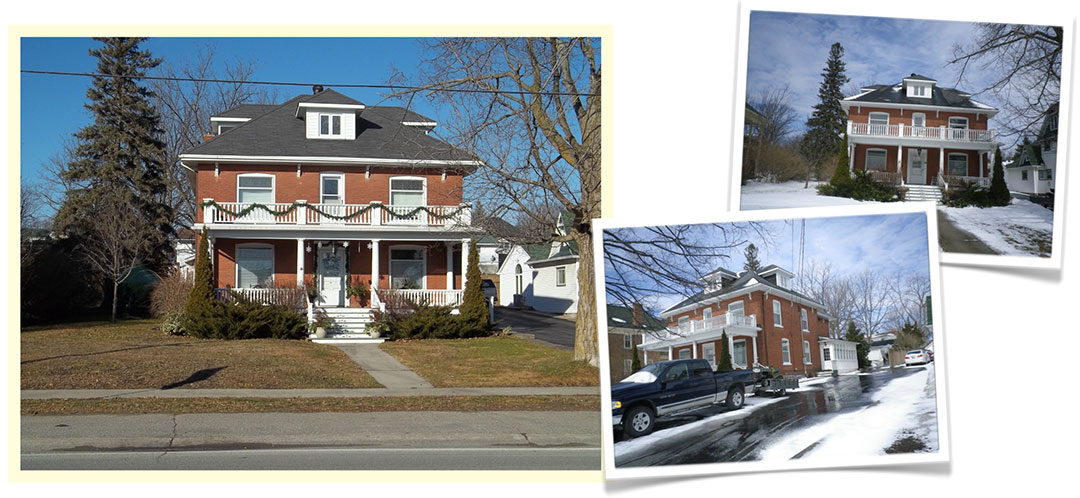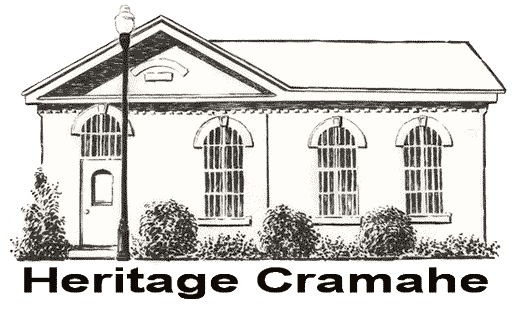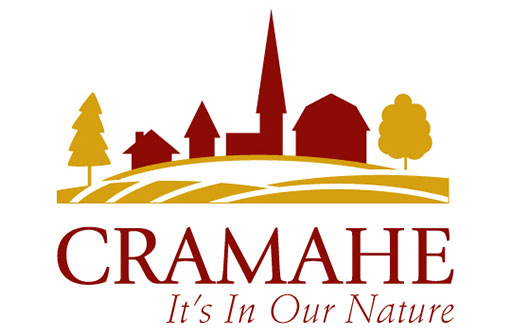65 King Street East, Colborne
(c. 1890-1900)
Roll No. 1411-12-020-07900 – Cramahe Township Ontario

American Four Square
The American Four Square is a house style popular from the mid-1890s to the late 1930s. It was a reaction to the ornate mass produced elements of the Victorian and other Revival styles popular throughout the last half of the 19th century. The American Four Square has regal simplicity and stately presence, often incorporating handcrafted “honest” woodwork rather than the “frilly” Victorian trim. This style incorporates elements of the Prairie and Craftsman school of Frank Lloyd Wright.
The style is also called the Transitional Period, marking the bridge between the Victorian age and the new 20th century.
The hallmarks of the Four Square style include a basically square design, two-and-one-half stories, usually with four large, square rooms to a floor, a center dormer in the one half story, symmetrical groups of large square windows, a hipped roof with deep overhangs and a large wraparound porch with wide stairs.
The Four Square is usually found in older urban streetcar suburbs, built on very narrow lots and built for efficiency and practicality. These homes are sturdy and solid and maximize family living space. No. 65 has a two story brick rear “section”, with a slightly lower roofline, possibly built at the same time or shortly thereafter, with an enclosed vestibule giving access to the side/back entry.
Clearly this house was built and occupied by a person of means and probably influence in the birth of Colborne.
History or Associative Value
30 August 1832, 65 King St.East, then a lot, was sold to a cabinet maker from Cobourg, George Stevens, who was married to Tryphena Merriman (of one of the founding families). For 39 years, the property changed hands among a group of men from Toronto, probably land agents. Daniel Simmons, a Colborne entrepreneur, bought the property in May 1874. In 1906, Simmons sold the property to Jessie Dudley a relative by marriage. The exact age of the house is not known but it is probably 1890 to 1900.
Additional Historical and Genealogical Information
Cramahe Township, Concession 2, Lot 31, Reid Lot 170
Lot 31, Concession 2 was first settled by George (1761-1833) and Hannah (1765-1832) Palmer, who arrived with Joseph Keeler (1763-1839) in 1793 or shortly thereafter (LINK). George Palmer was officially granted the 200 acres comprising Lot 31 on 15 July 1802 and he sold them to Joseph Keeler on 18 January 1812 (LINK). On 15 January 1824, Joseph Keeler transferred the southern 100 acres of Lot 31 to his son Joseph Abbott Keeler (1788-1855) (LINK).
The younger Keeler sold the 3/8 acres that were to become Reid Plan Lot 170 to George Stephens (1805-1875) on 30 August 1832. There is no George Stephens in any of the Cramahe censuses that is available, but there was a cabinet maker by that name who lived in Cobourg. It is pretty clear that this is the same George Stephens because:
- He was married to Tryphena Merriman (1800-1876).
- Tryphena was the daughter of Joel Merriman (1760-1832), one of the original settlers of Cramahe Township.
- Keeler had sold the land that would become Reid Lot 171, next door to Lot 170, to Tryphena’s brother Hiram Merriman (1791-1862) on 6 April 1832.
- Hiram Merriman was also a cabinet maker. Perhaps he and his brother-in-law worked together for a time?
George Stephens sold his property to William Bradbury on 29 October 1836. William and Mary Frances Bradbury owned the property until they sold it to George L. Maddison on 30 March 1855. I can find no records of William, Mary Frances, or any other Bradbury or Bradberry in Northumberland County. There were Bradburys in Toronto and Ottawa in the mid 19th century, no definitive connection to the Bradburys of interest here have been made.
There also is no George L. Maddison in any of my Cramahe censuses. There was an innkeeper in Toronto by that name in the 1871 census, and he may (or may not) be our man. If so, the Bradburys may have also been from Toronto rather than Ottawa. This is all pretty weak, but it is interesting that Maddison was listed in the 1861 Toronto census as a banker, baker, or barker (hard to read) and the entry immediately after his family’s listing is for a Joel Bradbury. Coincidence? The George Latham Maddison (1823-1881), who died in Toronto and is listed in his death record as a retired army lieutenant from England, is probably the same man.
Maddison sold the property back to the Bradburys, this time to James R. Bradbury, on 29 March 1856. Again, there was a James R. Bradbury in Toronto at this period, adding another bit of circumstantial evidence to the connection.
James Bradbury mortgaged the property with Weymouth G. Schreiber on 11 January 1858 for £273.2.6, and transferred title to him on 19 October 1865. Once again, there is no Schreiber in any Cramahe census. Weymouth George Schreiber (1826-1898) was another resident of Toronto. The name is odd enough that it is almost certain that this is our man. He was a land agent, which also makes sense.
On 18 May 1874 Mary Frances Merriman (1838-1877) renounced any claims she had on the property to Daniel Lewis Simmons (1830-1915) in return for $200. It is unclear why there was any question that she might have a claim, but she was the daughter (and likely the only surviving child) of the late Hiram Merriman, who had owned the property next door (see above). Perhaps there was a boundary dispute? On 17 February 1875 Weymouth Schreiber also renounced his claim to Lot 170 in favour of Daniel Simmons.
The transfer of Lot 170 to Daniel Simmons marks its return to local ownership for the first time in 39 years. Simmons was the grandson of early Cramahe settler Smiton Simmons (1769-1865). He is listed in various censuses as a wood and lumber dealer, farmer, exporter, and fruit dealer.
Daniel and his wife Eliza Ann (1831-?) sold Lot 170 to Jessie May Dudley (1878-?) on 5 February 1906. She continued to own it through our 1921 cut-off date. Jessie was the widow of Colborne merchant Samuel D. Dudley (1877-?), who appears in censuses as a carpenter, fruit dealer, and “manager”. Samuel was the son of Daniel Simmons’ cousin John Gilford Dudley (1835-1914), and so was also descended from Smiton Simmons (as well as early settler John Dudley [1799-1880]). Who knows if the family relationship had anything to do with Simmons selling the property to his first-cousin-once-removed-in-law? Jessie May Dudley was herself born a McDonald, and was a great-granddaughter of early Cramahe settler Alexander McDonald (1776-1852).
Jessie Dudley was resident on Lot 170 in 1911. Before her, the property was owned by Daniel Simmons from 1875 until 1906. His long-time residence was on King Street (Link). None of the absentee owners from 1836 to 1875 appear to have lived there; they were all residents of Toronto. It is possible that George Stephens lived there for a time in the mid 1830’s, but there is no solid evidence. If the house dates to the 1830’s, Stephens probably built it. If from the 1870’s, 1880’s, or 1890’s, or early 1900’s it was probably Daniel Simmons. If from after 1906, it was Jessie May Dudley. The amounts spent at each transaction don’t provide any useful clues in this case.




